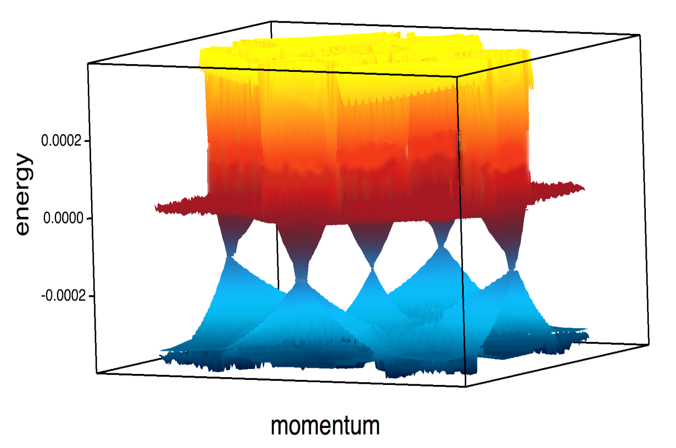物理学・宇宙物理学専攻・講師 PETERS, Robert

My research interest lies in the physics of strongly correlated materials, particularly in the discovery and theoretical explanation of novel quantum phenomena, which emerge when very large numbers of atoms and electrons interact with each other. A major challenge in these materials is that particles cannot be described independently, but the system, which consists of a huge number of particles, must be considered as a whole. As a consequence, the movement of e.g. an electron in the material is strongly influenced by the other electrons. Many more fascinating phenomena emerge due to the correlations (interactions between different particles) in the material: atoms form a regular pattern known as crystal; materials become magnetic, superconducting, or even form more complicated ordered states. Often different kinds of magnetic and superconducting orders are competing with each other and only a slight change of pressure or temperature completely changes the physical properties of the material.
By performing numerical simulations on a supercomputer, I try to discover novel quantum phenomena and to understand the fundamental mechanisms behind those. I want to understand why a certain material behaves as it does; e.g. how is it possible that a material changes from a magnet to a superconductor and then to a normal metal when increasing the pressure.
Unfortunately, simulations are often very complicated and yield only approximate results, due to the great complexity of these materials. Therefore, I am not only interested in understanding the physics, but also in inventing new and improving existing numerical techniques to simulate such materials. Finally, strongly correlated materials do not only present a big challenge, but also provide a great opportunity for future technological applications. Strong magnets, more efficient batteries, dissipationless wires, faster and more efficient electronics and quantum computer are possible applications for these materials; some are already reality, others are still far future.


Figure 1:Left: Crystal structure of Samarium hexaboride showing the Sm- and B-atoms. Crystals are an example for an emergent structure arising due to the interaction between many atoms. Right: Energy-momentum dispersion relation (describing the movement of electrons in the crystal) of a strongly correlated surface state on top of Samarium hexaboride demonstrating the existence of renormalized Dirac cones.



